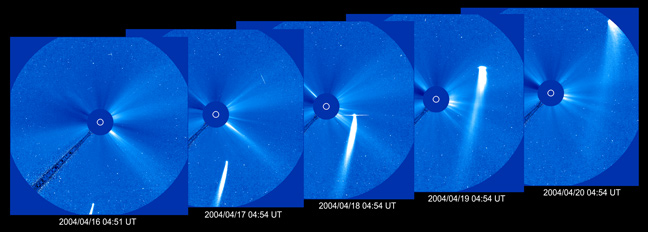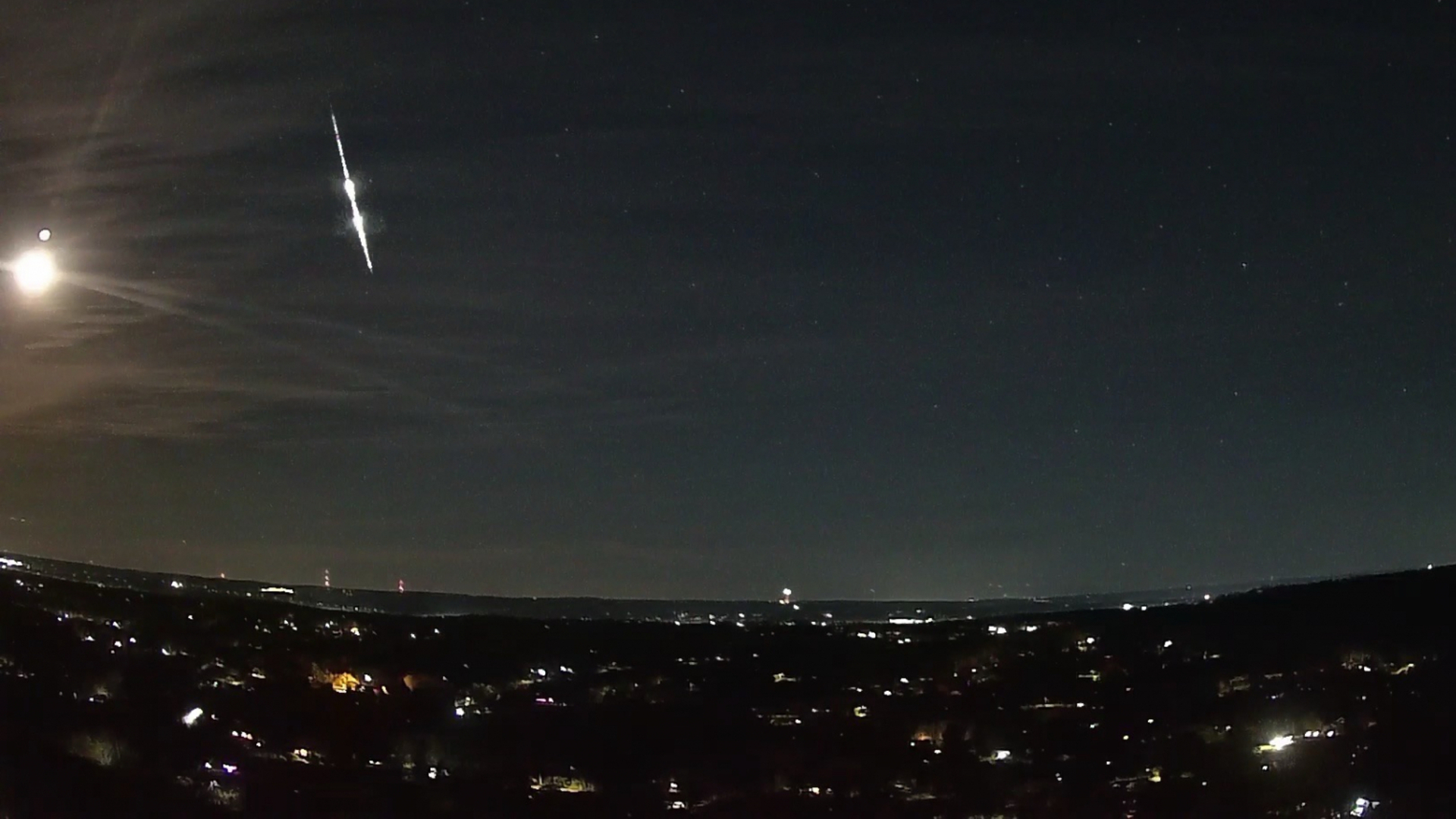Spacecraft's 1,000th Comet Discovery Looms

A spacecraft not designed to spot space rocks is approaching its 1,000th comet discovery.
An image sometime this summer from the Sun-watching SOHO probe will reveal the mission's milestone.
Most comets are discovered by ground telescopes, often by seasoned comet hunters.
The Solar and Heliospheric Observatory (SOHO) spacecraft was engineered to watch solar eruptions and the ensuing space weather that sometimes bombards Earth.
But early on in the mission, armchair astronomers figured out they could become comet discoverers using SOHO images posted to the Web.
The comets found with SOHO are very near the Sun, otherwise they wouldn't appear in the craft's field of view. These Sun grazers, as they are called, often escape other detection because they cannot be spotted amid the overwhelming glare.
SOHO is equipped with a device that blocks light from the Sun's main disk so detailed images can be made of the solar atmosphere and surrounding space.
Breaking space news, the latest updates on rocket launches, skywatching events and more!
"Before SOHO was launched, only 16 sun grazing comets had been discovered by space observatories," said Chris St. Cyr, senior project scientist for NASA's Living With a Star program at the agency's Goddard Space Flight Center. "Based on that experience, who could have predicted SOHO would discover more than 60 times that number, and in only nine years."
In January, mission officials projected SOHO's 1,000th comet would be found by October. They ran a contest for Internet users to pick the timing of the milestone.
The contest is now closed, and today officials said No. 1,000 would be spotted by summer's end.
SOHO is a joint effort between NASA and the European Space Agency. It has accounted for about half of all comet discoveries, through history, in which orbits have been calculated.
Some 85 percent of all SOHO comets belong to the Kreutz group, named because their orbits take them within 500,000 miles of the Sun's visible surface. Some make a trip around the Sun and head back out to the far reaches of the solar system on wildly elongated orbits. Others don't make it, being gravitationally drawn right into the star on close approach.
Other comets discovered without SOHO, such as one named Kudo-Fujikawa, have at times been watched in real time by web surfers as they dramatically sliced across SOHO's field of view. In 2003, a comet named NEAT, whose path in front of the SOHO cameras was well predicted, was smacked by a solar storm, the first such event ever recorded.
- SPACE.com Cams: See the Sun, Live!
- Deep Impact: Another Comet Hunter
- Top 10 SOHO Images
- SOHO Special Report
Join our Space Forums to keep talking space on the latest missions, night sky and more! And if you have a news tip, correction or comment, let us know at: community@space.com.

Rob has been producing internet content since the mid-1990s. He was a writer, editor and Director of Site Operations at Space.com starting in 1999. He served as Managing Editor of LiveScience since its launch in 2004. He then oversaw news operations for the Space.com's then-parent company TechMediaNetwork's growing suite of technology, science and business news sites. Prior to joining the company, Rob was an editor at The Star-Ledger in New Jersey. He has a journalism degree from Humboldt State University in California, is an author and also writes for Medium.
